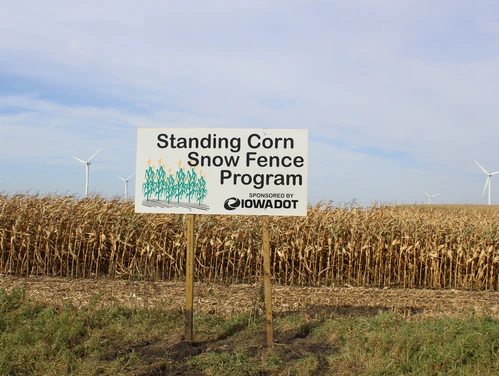As combines sweep through golden fields and pumpkins find their way from patches to porches, the harvest of Iowa’s autumn bounty is underway. But while you're savoring the season of Friday night football and everything pumpkin spice, the Iowa DOT is already preparing for everything snow and ice. October 15 marked the official start of the DOT winter season, and we’re partnering with Iowa’s farmers to keep roads clear and safe.
We planted an idea more than 40 years ago that continues to grow and help contain winter elements – the Standing Corn Snow Fence Program.
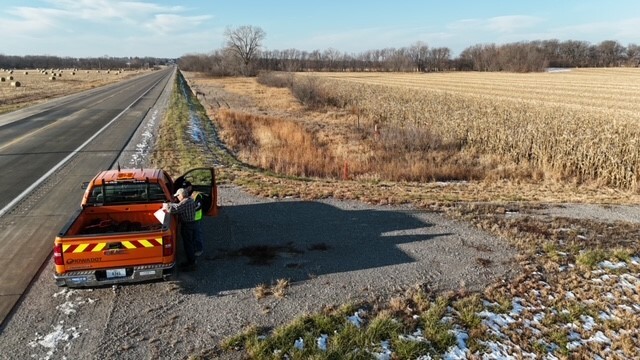
Not your typical snow fence, we’ve been working with Iowa farmers since the 1980s to leave rows of standing corn – sometimes even round bales – along highways in open, wind-prone areas. These natural cornstalk wind blocks slow down blowing snow and reduce severe drifting across rural roads, and it has great snow storage capacity between rows providing a valuable wildlife shelter. It all helps keep roads open and drivable on the worst of winter days.
How Stalks Make It Work
The agricultural barrier is a win-win-for the DOT and farmers. The program pays producers to leave specific rows of corn standing, using their stalks to trap snow and create a designated drift area. Not only are farmers compensated, but they receive the added benefit of increased soil moisture from the melting snow. The partnership benefits the state by reducing snow removal costs and improving road safety. Motorists win when they gain access to their communities during the winter for jobs, schools, medical care, groceries and other supplies.
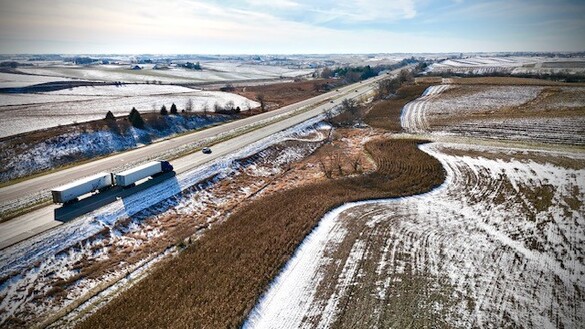
Participating farmers agree to leave six to 24 rows of corn standing along roadways – typically located 100 to 200 feet or more to provide adequate drift formation through the winter. In return, the DOT pays them based on assumed yield using the statewide average cash price on August 1 each year plus $2.00 per bushel. This year, the DOT is paying $5.75 per bushel – that’s nearly $2 more than the statewide average price as of August 1.
According to DOT Winter Operations Administrator, Craig Bargfrede, these living snow fences are proven to protect the environment and decrease costs with lower salt use, fewer truck trips and less fuel consumption.
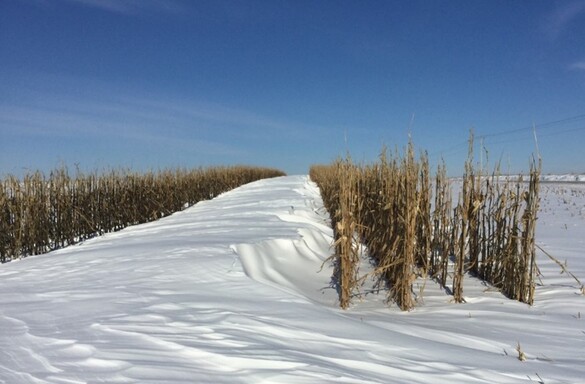
“Studies show that plowing snow costs 100 times more than trapping it with a snow fence, so these partnerships really pay off,” says Bargfrede. “Farmers who participate in the program are performing a valuable public service because these snow fences can also help maintain clear roadways for their communities by capturing blowing snow upwind of a problem area and storing that snow over the winter season,” he adds.
More Than A Wind Break
The Standing Corn Snow Fence Program is about more than money or snow—it’s about partnership. “Farmers know their land. We know the roads. Together, we can identify the best spots for snow fences and even collaborate on which corn hybrids are most resilient to constant winter winds,” says Bargfrede, who adds that some farmers go the extra mile, teaming up to harvest the snow fence rows in spring or donating the corn to local causes.
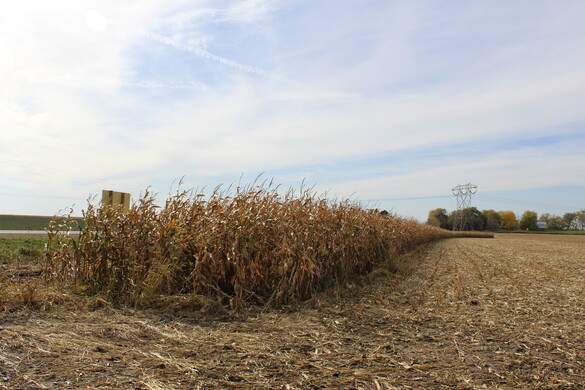
And the benefits don’t stop at the roadside – they extend to sheltering ecosystems and improved soil health:
- Wildlife habitat during the cold months
- Improved soil moisture in end rows
- Reduced soil erosion from wind and snow
Standing Bales Work Too
Like the standing corn fencing program, the standing bale program provides positive impact on roadways. Land owners simply line up bales end-to-end and will be compensated $1.00 per linear foot of bale running parallel along a susceptible roadway. Bales are typically placed approximately 200 feet from the edge of the roadway.
Want to Join the Fence Line?
We’re always looking for new partners! If your property borders a highway and you’re interested in joining the Standing Corn Snow Fence Program, reach out to your local Iowa DOT maintenance garage. You’ll find contact information on our District Contacts webpage.
Let’s work together to turn your harvest into highway safety. Because in Iowa, even corn can help clear the way.
